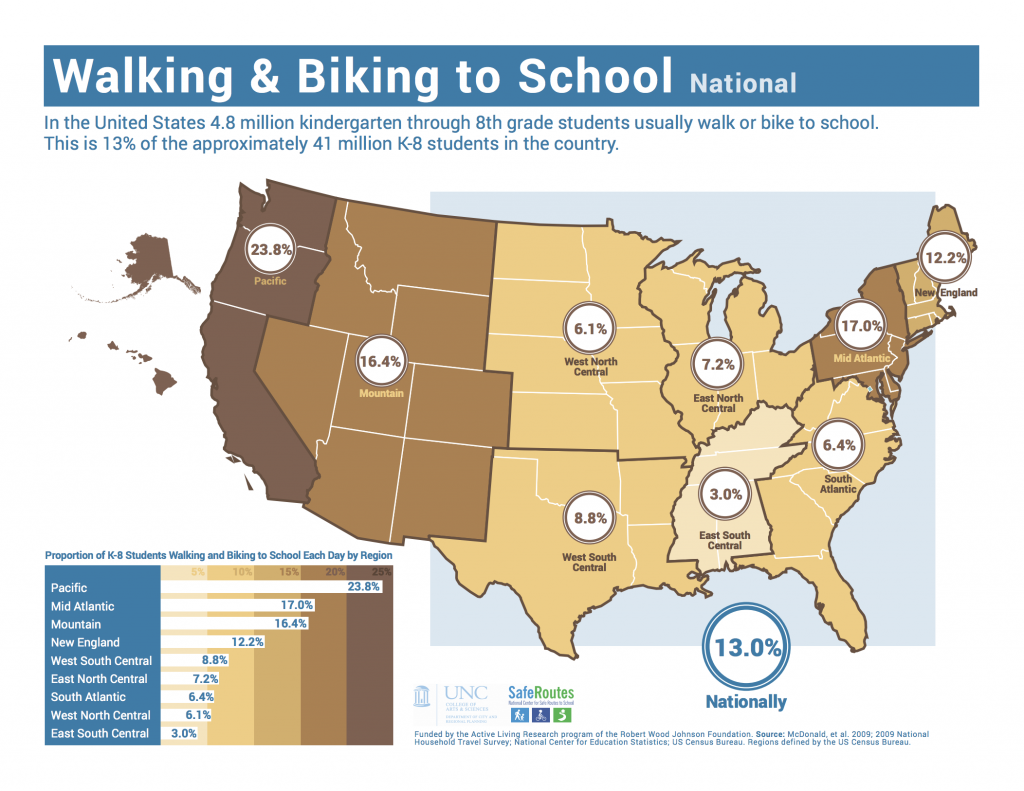Children Aren’t Walking to School Anymore: Why?
By TH!NK by IBI
Date
February 2, 2018In the 1970s, 86 percent of British children walked to school alone. Today, less than 25 percent of students do the same, according to a study by the University of Westminister. A similar change in statistics can be found in North America: in 1969 48% of American children walked or biked to school, but by 2009 less than 13% of children did the same. This didn’t happen overnight and a series of correlated factors contributed to this decline, making it difficult to say why exactly so many less children are taking the walk to school.

Percentage of students who walk and bike to school by region. Click here to view larger image. Image Credit: Active Living Research
What effect is this having on modern children? Speaking to the CBC, Mariana Brussoni, an associate professor at the University of British Columbia’s School of Population and Public Health says “Kids get great physical activity from the experience, and [that] has been known to be associated with lower rates of obesity, but also clearer mental cognitive capacity and resilience and better mood, so they can take these benefits into the school day with them.” This is similar to research out of the University of Toronto, where PhD candidate George Mammen has studied school travel planning,
“Children who walk to school have been found to have higher academic performance in terms of attention/alertness, verbal, numeric, and reasoning abilities; higher degree of pleasantness and lower levels of stress during the school day; and higher levels of happiness, excitement and relaxation on the journey to school. Walking to school can further foster personal growth by developing a sense of independent decision making, emotional bonds with peers and the natural environment, and road and traffic safety skills.”
Are kids educations being effected by their commutes? Does the walk to and from school set children up for not only better health, but greater educational success?
Photo by Austin Nicomedez on Unsplash







